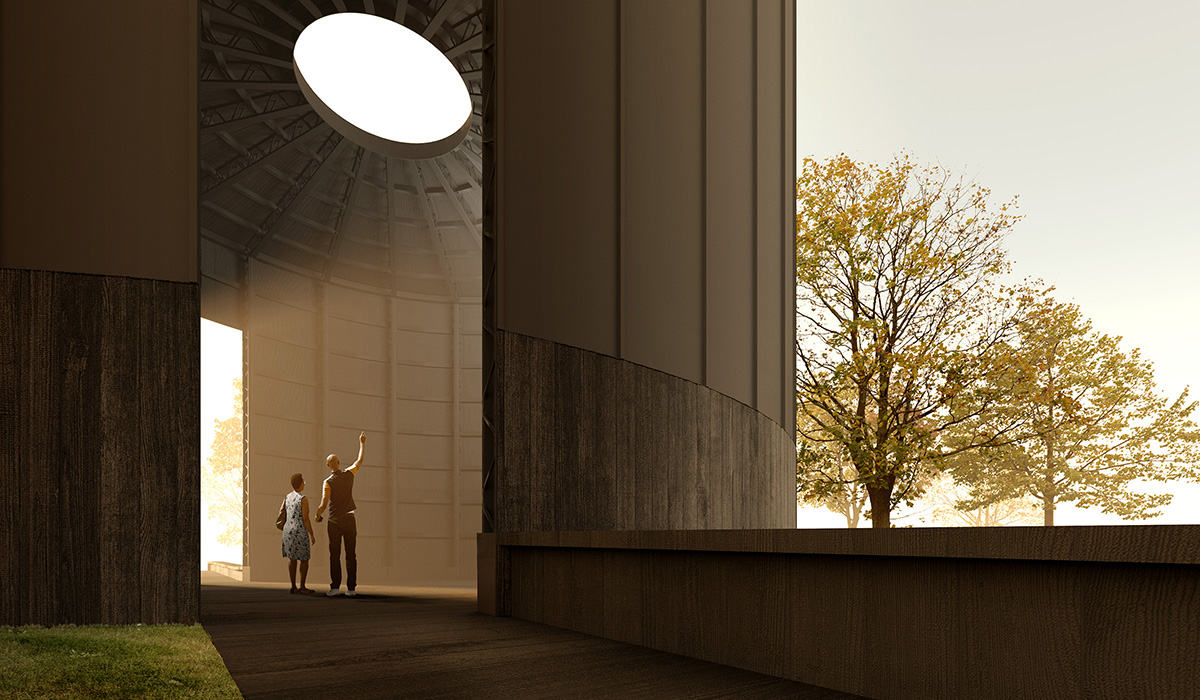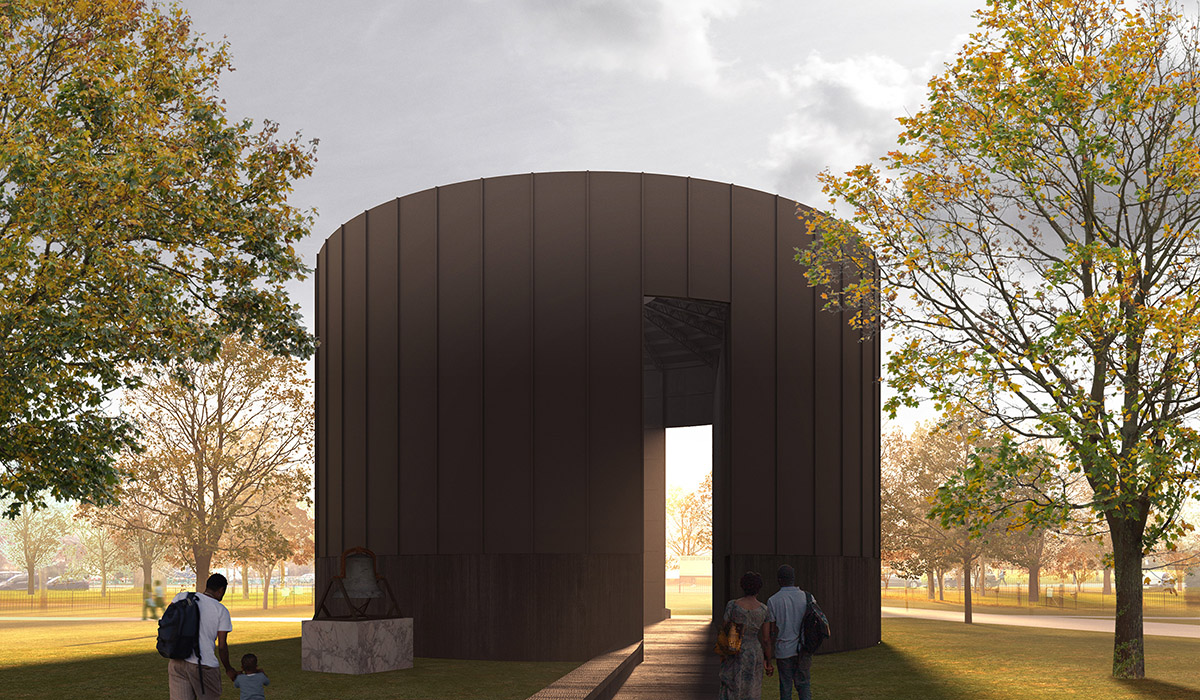Submitted by WA Contents
Theaster Gates' 2022 Serpentine Pavilion references to British craft and manufacturing traditions
United Kingdom Architecture News - Feb 03, 2022 - 16:33 1762 views

Chicago-based artist Theaster Gates has unveiled design for the 2022 Serpentine Pavilion that pays homage to British craft and manufacturing traditions with its wooden structure.
Named Black Chapel, the pavilion, which will be built in London's Kensington Gardens, is designed with the architectural support from Adjaye Associates.
The 2022 Serpentine Pavilion will open to the public on Friday 10 June 2022 in its eighth consecutive year and will be on view until 16 October, 2022.
Gates' design takes inspiration from the significance of the bottle kilns of Stoke-on-Trent, they were a typical of the industrial landscape, where nearly 50 are preserved as listed buildings. Most of the kilns were built in the later 18th and the 19th centuries, although the some of them have survived from the 20th century.
The pavilion is predominantly made of wood, alluding to the performative and meditative qualities of a small chapel. An operating bell, taken from the demolished St. Laurence Church on Chicago’s South Side, will be placed next to the entrance of the Pavilion and will be used to call, signal and announce performances and activations.
The Pavilion will be a single source of light coming from its oculus that will create a sanctuary-like environment for reflection and communion.

Theaster Gates. Image © Sara Pooley
Black Chapel is designed as a platform for participation, live performances, with an emphasis on music and public engagement, it will continue the artist’s ongoing practice of space-making through urban and architectural interventions.
"The name Black Chapel is important because it reflects the invisible parts of my artistic practice. It acknowledges the role that sacred music and the sacred arts have had on my practice, and the collective quality of these emotional and communal initiatives," said Theaster Gates.
"Black Chapel also suggests that in these times there could be a space where one could rest from the pressures of the day and spend time in quietude."
"I have always wanted to build spaces that consider the power of sound and music as a healing mechanism and emotive force that allows people to enter a space of deep reflection and/or deep participation," Gates added.
Black Chapel is the culmination of Serpentine’s collaboration with London art institutions and galleries The Victoria and Albert Museum, Whitechapel Gallery and White Cube, to realise a multivenue London presentation The Question of Clay of the artist’s work across 2021-2022.

Serpentine Pavilion 2022, Black Chapel, designed by Theaster Gates. Design render, exterior view. Image © 2022 Theaster Gates Studio.
The pavilion takes its name from the 2019 work of Theaster Gates, who activated the central atrium of museum Haus der Kunst, Munich, which was originally built for the Nazi Regime. This project was an attempt to bring Black spiritual life to the museum.
"Gates’ praxis combines formalism, conceptualism and powerful impact felt throughout the communities"
"We are honoured to undertake this remarkable project with leading visual artist Theaster Gates. One of the most significant voices working today, Gates’ praxis combines formalism, conceptualism and powerful impact felt throughout the communities in which he works and beyond," said Bettina Korek, Chief Executive, and Hans Ulrich Obrist, Artistic Director.
"We look forward to welcoming visitors to Black Chapel as a platform for engagement, spirituality and togetherness."
This year’s Pavilion selection was made by Serpentine Artistic Director Hans Ulrich Obrist, CEO Bettina Korek, Director of Construction and Special Projects Julie Burnell, Director of Curatorial Affairs and Public Practice Yesomi Umolu, and Project Curator Natalia Grabowska together with advisors Sir David Adjaye OBE and David Glover.
Black Chapel will predominantly be built from timber
This year, the Pavilion aims to minimise its carbon footprint and environmental impact, in line with Serpentine’s sustainability policy.
Considering the sustainable principles and its environmental impact, the pavilion will predominantly be built from timber with a light-weight and will be fully demountable. The construction of the pavilion will focus on sustainably-sourced materials and the reusability of the structure as a whole after its time installed at Serpentine.
While the Pavilion begins its life in Kensington Gardens, it will be re-sited to a permanent location in the future.
This year, for the first time, Theaster Gates becomes the first artist designing the Serpentine Pavilion.
Serpentine also sent acknowledges the work and dedication of the late architect Richard Rogers to this yearly commission. Rogers was an integral part of the Serpentine Pavilion team and served as an Advisor since 2017.
The 20th Serpentine Pavilion was designed by Johannesburg-based practice Counterspace, led by Sumayya Vally. 2019 Serpentine Pavilion was designed by Japanese architect Junya Ishigami with a cave-like structure.
Previous Serpentine Pavilion designers include Frida Escobedo, Bjarke Ingels and Sou Fujimoto.
Top image: Serpentine Pavilion 2022, Black Chapel, designed by Theaster Gates. Design render, interior view. © 2022 Theaster Gates Studio.
> via Serpentine Galleries
